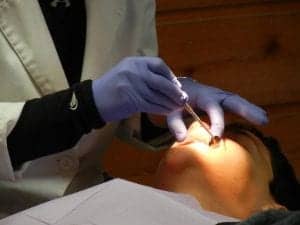Here is an explanation of dental probing that will hopefully help you understand…
Most of us have heard the terms gingivitis or gum disease. Once a year, these numbers we record are taken to evaluate the health of our gum tissue. A periodontal probe (tiny gum ruler) is utilized to measure the pocket depths in millimeters along the gumline, on the front and back of each tooth, totaling 6 measurements per tooth.

When listening to these numbers, 1, 2 and 3 millimeters are all normal, healthy gum attachments to the teeth. If you hear 4 millimeters, this is an area where dental probing may have revealed some inflammation.
Inflammation may be caused by being past due for your routine cleaning. Tartar builds up below the gumline and is unable to be removed with regular brushing and flossing at home, that is one of the reasons why professional cleanings are so important. Hygienists have been educated and trained to remove this build up with specially designed instruments. This number can be reversed after the source of inflammation has been removed.
There are some circumstances that result in 4 millimeter pockets even when we have our regular checkups and proper home care. Your hygienist or dentist would be happy to explain the situation if this applies to you!
The periodontal probe records numbers between 1 and 12 millimeters! When numbers are consistently higher, 5,6 and 7 millimeter pockets, periodontal disease may be present and a “deeper” cleaning may be recommended.
